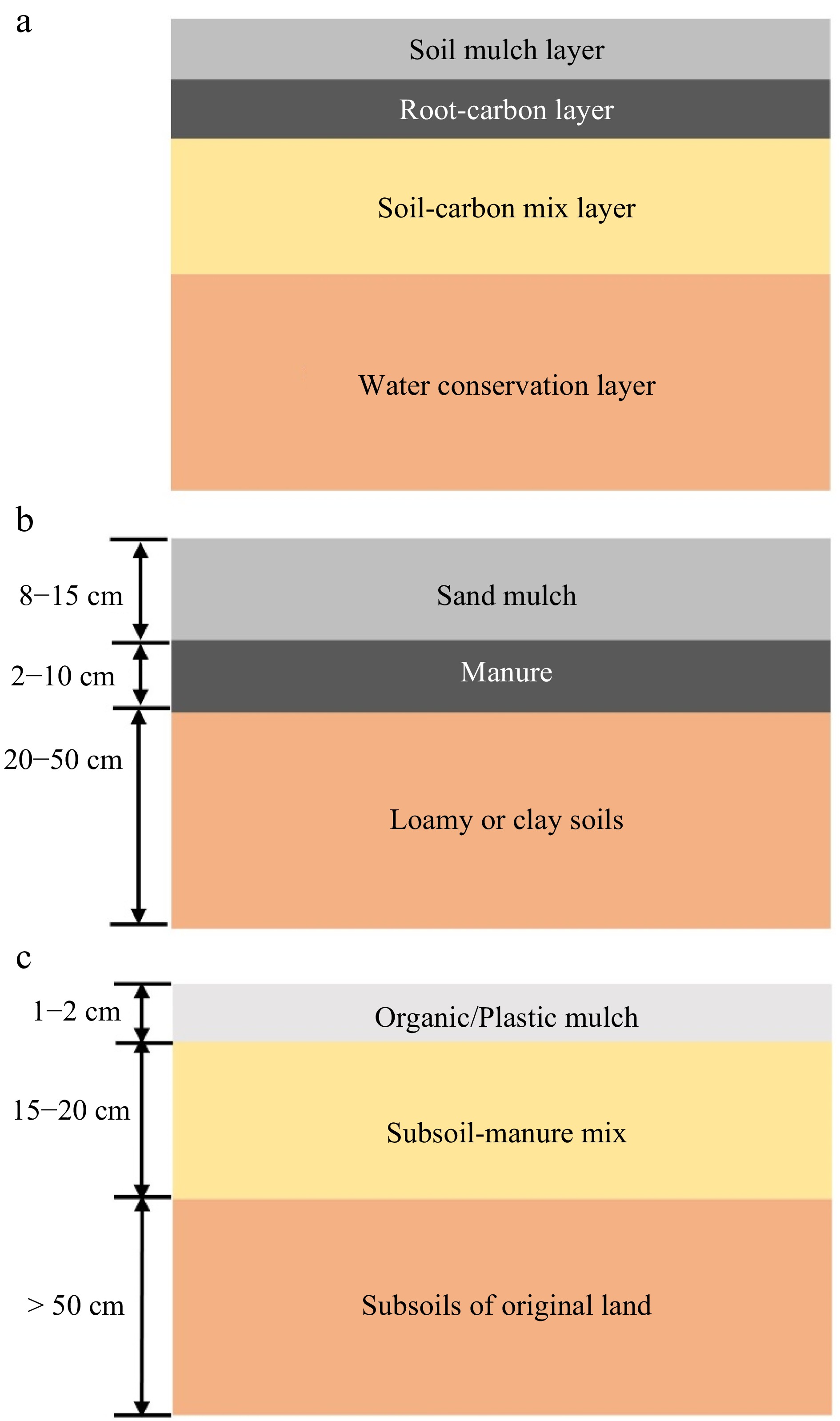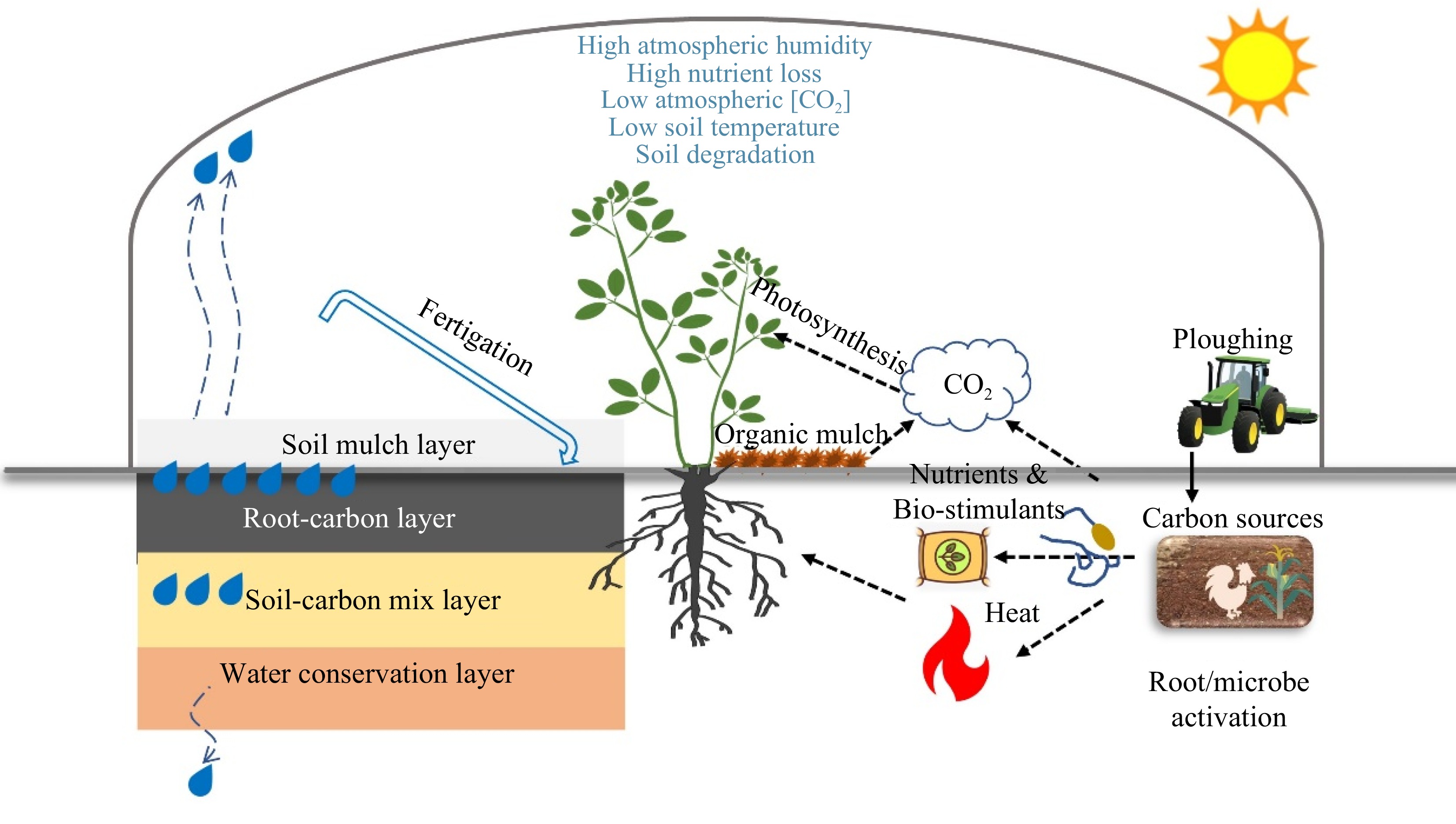-

Figure 1.
Profile of plastic-greenhouse soils as (a) conceptual framework and two examples for horticulture production as sand mulching profile charactered by sand mulch in (b) Almería, Spain modified based a previous study[25], and as sunken profile charactered by digging to obtain subsoils of clay in (c) Shouguang county, China.
-

Figure 2.
Plastic-greenhouse soil profile that motivates carbon and nutrient cycling, and heat production, and saves nutrient and water for that can counteract the environmental constraints of high atmospheric humidity, high water and nutrient loss, low atmospheric CO2, low soil temperature, soil compaction, and soil degradation. Some of the symbols were adopted from IAN/UMCES Symbol and Image Libraries.
-
Constraints Reasons for the constraints Remediation from soil perspective Ref. Low atmospheric [CO2] Partly sealed environment by plastic covers limits CO2 diffusion from atmosphere to greenhouses Application of organic or inorganic amendments to soils, accelerating their quick decomposition [47,48] High atmospheric humidity Plastics limit the diffusion of evaporated water, strengthened by frequent irrigation Organic or plastic mulch, and drip irrigation to allow low evaporation [37,49] Low soil temperature Off-season horticulture production, frequently in winter period Decreased soil-specific heat capacity, and heat production and preservation [22,50] Nutrient loss Heavy chemical and organic fertilizer input and frequent irrigation, facilitating leaching of $ {\text{NO}^-_3} $ Limiting leaching or gaseous N loss by water conservation soil interlayer or less irrigation [5,51] Soil compaction Extensive mobility of machine and human Increasing organic fertilizer input, and frequent ploughing [52,53] Soil pollution, acidification, and salinization Heavy chemical input and residue leftover Addition of organic fertilizer, and decreasing the origin of residual toxins [26,54] Table 1.
The constraints for plastic-greenhouse horticulture production, corresponding reasons and remediation measures from soil perspective.
-
Soil profile Primary function Practices Soil mulch layer Evaporation inhibition Rice husk mulching Root-carbon layer Root and microbe activation Manure or compost application Soil-carbon mix layer Increase soil resilience Biochar or peat input Water conservation layer Water and nutrient preservation Deep placement of
clay soilsTable 2.
The profiles of plastic-greenhouse soil, their primary function and the practices to establish the cost-effective soil layer.
-
Items Sunken profile Soilless culture Total costs 379,500 657,000 Seedlings 45,000 48,000 Water and fertilizers 108,000 165,000 Workforce 180,000 285,000 Substrate 0 90,000 Others 46,500 117,000 Income 634,500 877,500 Tomato yield (t·ha−1) 211.5 292.5 Net profits 255,000 220,500 The price of tomato was CNY3,000 t−1. The others include machine and land rent, fertigation energy consumption, and pesticide. The data were based on a survey of the local smallholder farmers. Table 3.
The comparison of the costs of tomato production in plastic greenhouses between sunken profile and soilless culture (CNY ha−1) in the Shouguang county, Northern China in 2022.
Figures
(2)
Tables
(3)